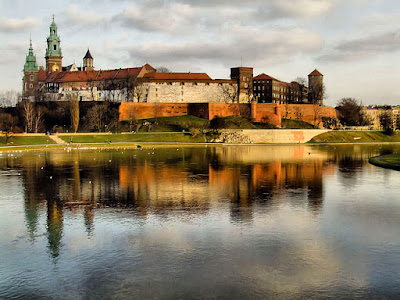Tapestry Art and Noah
Tapestries are an ancient art form, and were extremely popular in Europe during the Middle Ages. Perhaps the larger versions were used to cover the cold castle walls as well as appeal to the eye. Since this art was made by hand on a loom, it had an advantage of being somewhat portable. The Wawel arrasses can be found in Warwel Castle in Poland.
The king, Sigismund II Augustus, he liked him some tapestries, and had a passel of 'em. Celebrated 16th century artist Michiel Coxie (the "Flemish Raphael") was involved. His scenes involving Noah and the Ark included dragons, the word in use before dinosaur was coined. Coxie wanted to be faithful to the biblical text, and after all, dragons were mentioned in books at the time; dragons must have been on the Ark.
Dinosaurs have appeared in old art, such as the Angkor Wat carving, those at Bishop Bell's tomb, possibly the Ica stones, and others. Darwin's disciples object to the possibility that man and dinosaurs ever coexisted because evolution, but historical records, art, and especially the Bible indicate otherwise. Michiel probably did not see any of those critters, so there is a bit of artistic license in his work.They did had some dinosaur characteristics, however.
 |
| Credit: Wikimedia Commons / KHRoN (CC BY-SA 2.5) |
Dinosaurs have appeared in old art, such as the Angkor Wat carving, those at Bishop Bell's tomb, possibly the Ica stones, and others. Darwin's disciples object to the possibility that man and dinosaurs ever coexisted because evolution, but historical records, art, and especially the Bible indicate otherwise. Michiel probably did not see any of those critters, so there is a bit of artistic license in his work.They did had some dinosaur characteristics, however.
Within the eight pieces telling the story of the Flood are two tapestries showing the animals going onto and coming off Noah’s Ark. Many of them are easily recognizable as good depictions of their living counterparts today: lions, camels, cows, and various types of birds. But there are also animals that look distinctly like dragons.To read the entire article, click on "Dragons on Noah’s Ark — The tapestries of Sigismund II Augustus".